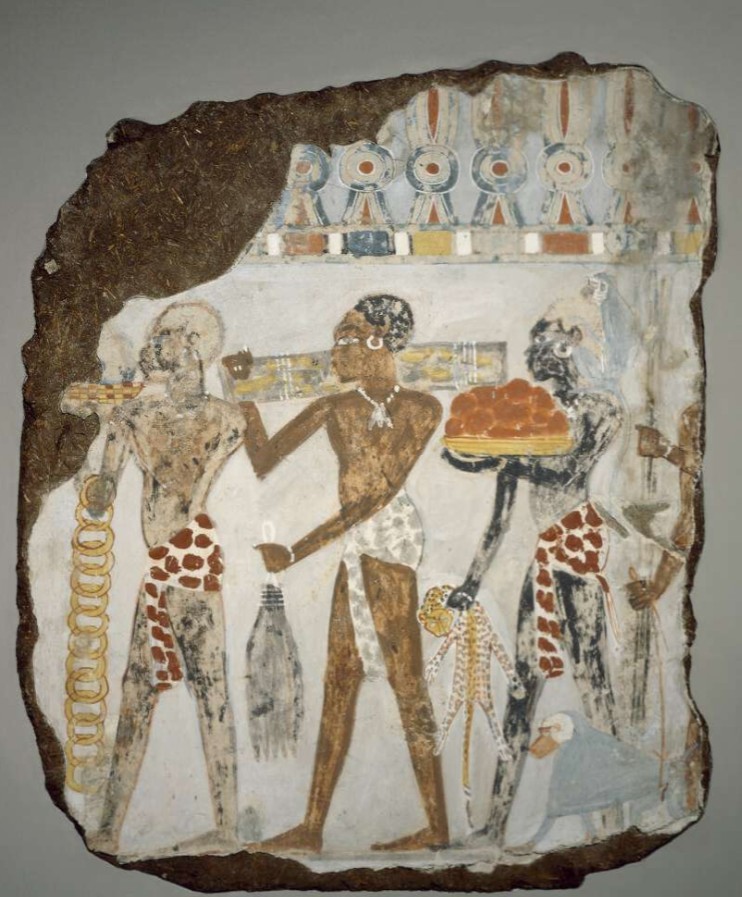Slavery in Ancient Egypt

“Slavery” in ancient Egypt was fundamentally different from the chattel slavery of Africans in the transatlantic trade, both in structure and in societal integration. The term “slavery” in the ancient world is complex, because it covered a range of statuses, including forced labor, servitude, debt bondage, and war captivity—but not always dehumanization or racialization as in modern forms.
Here is a break it down in a structured way:
🔹 1. Terminology and Social Structure
In ancient Egypt, the closest word to “slave” was ḥm (hem), which can mean “servant” or “slave.” But context matters—the term could describe:
Personal household servants
State laborers
Prisoners of war
Bonded laborers (debtors)
Or even low-ranking officials in some administrative texts
Egyptian society was highly stratified, but mobility was possible, and some “slaves” could own property, marry freely, and even buy their freedom.
🔹 2. Types of Slavery in Ancient Egypt
✅ A. War Captives (Foreign Slaves)
Most slaves came from military conquests—Libyans, Nubians, Syrians, and Canaanites.
They were often brought back and used as:
Laborers in temples or royal estates
Household servants
Guards, soldiers, or even scribes if educated
✍️ Notably, some became assimilated, marrying Egyptians and adopting the language and religion.
✅ B. Corvée Labor (Forced but not “Slave”)
Egyptian citizens (especially peasants) could be temporarily conscripted for state projects—pyramids, canals, temples.
This was not permanent slavery but unpaid or poorly paid mandatory labor, often rotational and tied to tax obligations.
⚠️ This is often confused with slavery in popular books (e.g., building pyramids), but these were often free Egyptians under obligation.
✅ C. Debt Bondage
Individuals could become indentured through debt.
Some sold themselves or their children into labor for a limited time.
Such agreements were often recorded legally and had terms of release or inheritance of obligation.
✅ D. Household and Temple Servants
Wealthy Egyptians and temples had servants who might be slaves, bonded laborers, or hired workers.
Slaves could be:
Given as gifts
Inherited
Traded
But they could also:
Marry
Accumulate personal property
Be freed (and sometimes chose to remain)
✅ E. Criminal Punishment
People guilty of crimes could be sentenced to hard labor or servitude—effectively penal slavery.
🔹 3. Legal and Cultural Framework
Slaves had some legal recognition: they could appear in contracts, be part of dowries, or initiate petitions.
In wills or temple records, they are named—sometimes even praised or promoted.
They were not necessarily “non-persons” as in later Roman or modern slavery.
🔹 4. Religious and Symbolic Integration
Temples were massive employers and had large enslaved populations for agricultural work.
Slaves were often dedicated to gods, especially foreign captives.
Some were branded or tattooed, especially under Ramesside rulers, but this was not the norm.
🔹 5. Race and Slavery
Ancient Egyptian slavery was not race-based. While many slaves were Nubian or Asiatic, they were enslaved due to conquest, not skin color.
Egyptians had no category equivalent to “black” or “white” in a modern racial sense.
🔹 6. Economics and Slavery
Egypt’s economy did not depend on mass slavery the way Rome’s or the American South’s did.
Slavery supplemented free labor, especially in large estate and temple economies.
Many agricultural and construction workers were not slaves, but corvée laborers (i.e., rotational tax laborers).
The following are artifacts collectively offer insights into the roles and representations of slaves and forced laborers in ancient Egyptian society.
🔹 1. Ramesses III Prisoner Tiles
These faience tiles, dating to the 20th Dynasty (circa 1189–1077 BCE), were discovered in the palaces of Ramesses III at Medinet Habu and Tell el-Yahudiyeh. They depict bound prisoners, likely representing foreign captives from military campaigns. The tiles illustrate how such individuals were subjugated and possibly integrated into the labor force, reflecting the use of war captives in state projects. Many of these tiles are housed in the Egyptian Museum in Cairo and the Museum of Fine Arts, Boston. Wikipedia+1Wikipedia+1
🔹 2. Tomb of Rekhmire Reliefs
In the tomb of Vizier Rekhmire (TT100) in Thebes, 18th Dynasty (circa 15th century BCE) wall paintings depict foreign laborers engaged in brick-making and construction. These scenes are interpreted as representations of Levantine captives performing corvée labor, providing visual evidence of non-Egyptians employed in state building projects. The Torah
🔹 3. Branding Irons and Medinet Habu Reliefs
Archaeological findings suggest that ancient Egyptians used branding irons on human slaves, particularly foreign captives. Reliefs at Medinet Habu depict the branding process, indicating a method of marking and controlling slaves. This practice underscores the institutional aspects of slavery in ancient Egypt. Wikipedia+2Live Science+2Ancient Origins+2
🔹 4. Mud Bricks with Royal Seals
The British Museum houses mud bricks stamped with the seal “House of Ramses II.” These bricks, containing straw, align with the biblical description of Israelite labor in Egypt. While direct evidence linking these artifacts to Israelite slaves is debated, they exemplify the use of forced labor in royal construction projects. AishWikipedia+2The Torah+2Aish+2
CHAPTER 3
Ancient Egyptian Slavery
Ella Karev
Beezone Note:
“Despite the quote opening this chapter [Exodus 20:2], this includes any reference to the Exodus narrative; though there is evidence for enslaved persons originating from the Levant, mainstream scholarship largely rejects the narrative as historical truth.”
The Exodus story is a powerful mythic narrative, but not one with substantiated evidence in Egyptian sources. The term “house of slaves” may reflect a biblical memory or theological motif, not an accurate picture of Egyptian labor structures as known from archaeology or texts.
Introduction
Slavery in Ancient Egypt still exerts a powerful hold over imaginations today. Based on the Exodus narrative, the view of Egypt is often that of a “house of slaves,” a society founded on slave labor. And yet, Egyptian documentation reveals little about slaves and slavery, instead providing us with evidence of marginalized groups, prisoners of war, and ambiguous terminology that blurs the line between servant and slave.
READ eBook